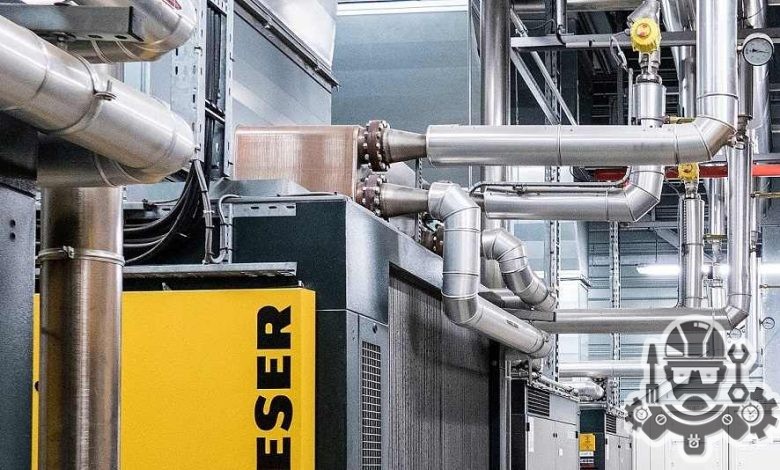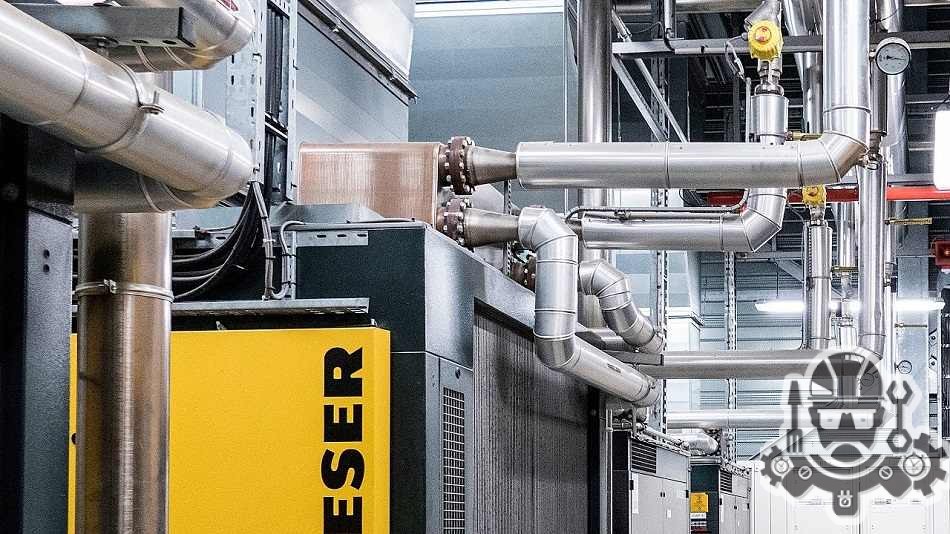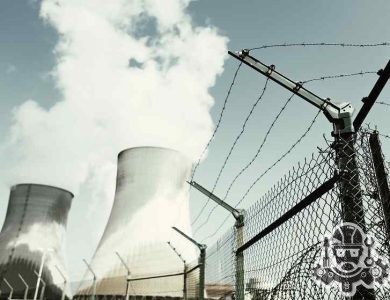How Does Compressor Heat Recovery Actually Work?

Contents
- 1 What Is Compressor Heat Recovery?
- 2 The Importance Of Compressor Heat Recovery
- 3 How Does Compressor Heat Recovery Work?
- 4 Benefits Of Implementing Compressor Heat Recovery
- 5 Factors To Consider When Implementing Compressor Heat Recovery
- 6 Common Challenges In Compressor Heat Recovery Systems
- 7 Successful Case Studies Of Compressor Heat Recovery
What Is Compressor Heat Recovery?
Compressor heat recovery refers to the process of capturing and utilizing the heat generated by a compressor during its operation. Compressors are essential components in various industrial applications, such as refrigeration, air conditioning, and power generation. These machines work by compressing a gas or vapor, which generates heat as a byproduct. Instead of letting this heat go to waste, compressor heat recovery systems harness it for various purposes, such as heating water, space, or other process fluids.
Implementing compressor heat recovery can significantly improve energy efficiency and reduce operating costs in industrial settings. By utilizing the waste heat from compressors, companies can reduce their dependence on external heating sources and, in turn, cut down on energy consumption and greenhouse gas emissions. The captured heat can be used directly or stored for future use, providing a sustainable and cost-effective solution for heating needs.

One common method of compressor heat recovery is through the use of heat exchangers. Heat exchangers are devices that transfer heat between two fluids without them coming into direct contact. In compressor heat recovery systems, a heat exchanger is installed to extract the heat generated by the compressor and transfer it to a separate fluid, such as water or air. This recovered heat can then be used for a variety of applications, ranging from preheating ventilation air to heating up water for industrial processes.
- Effective implementation of compressor heat recovery requires careful consideration of several factors. First and foremost, the compatibility of the system with the existing compressor and heating requirements needs to be evaluated. The size and capacity of the heat recovery system should be adequate to handle the heat generated by the compressor. Additionally, the design and configuration of the heat recovery system should optimize heat transfer efficiency to maximize energy savings.
- Challenges may arise in compressor heat recovery systems, such as the risk of fouling and corrosion in heat exchangers. Regular inspection, maintenance, and cleaning are necessary to ensure optimal performance and prevent any issues that may arise due to the high temperatures and pressures involved. Furthermore, the cost of implementing compressor heat recovery systems should be carefully evaluated against the potential energy savings and environmental benefits. Proper cost-benefit analysis can help determine the viability and return on investment of such systems.
- Successful case studies of compressor heat recovery can inspire and guide companies looking to implement similar systems. Several industrial facilities have successfully implemented compressor heat recovery, resulting in significant energy savings and improved sustainability. These case studies showcase the different approaches and technologies used in compressor heat recovery, such as combined heat and power (CHP) systems, cogeneration, and waste heat recovery.
| Advantages of Compressor Heat Recovery: |
|---|
| 1. Energy efficiency improvement |
| 2. Cost reduction |
| 3. Greenhouse gas emissions reduction |
| 4. Reduced dependence on external heating sources |
| 5. Increased sustainability |
The Importance Of Compressor Heat Recovery
Compressor heat recovery is a crucial aspect of energy management that often goes overlooked. It refers to the process of harnessing and utilizing the waste heat generated by compressors in various industrial applications. This waste heat, which is typically released into the atmosphere, can be efficiently recovered and used for heating air, water, or other fluids, resulting in significant energy and cost savings. The importance of compressor heat recovery lies in its potential to increase overall energy efficiency, reduce greenhouse gas emissions, and enhance sustainability in industrial operations.
One of the key benefits of implementing compressor heat recovery is the substantial reduction in energy consumption. By tapping into the waste heat produced by compressors, industries can offset the need for additional heating systems. This translates to lower energy bills and a reduced carbon footprint. Moreover, compressor heat recovery systems can also improve the overall performance and longevity of compressors, as they help to maintain optimal operating temperatures and reduce wear and tear. This leads to cost savings in terms of maintenance and equipment replacement.
Another important aspect to consider when it comes to compressor heat recovery is its potential to contribute to environmental sustainability. By utilizing waste heat, industries can decrease their reliance on fossil fuel-based heating systems, thereby reducing the demand for non-renewable energy sources. This not only helps to mitigate the environmental impact associated with energy consumption but also aligns with global efforts to combat climate change. Industries that prioritize compressor heat recovery can position themselves as leaders in sustainability and gain a competitive edge in the market.
How Does Compressor Heat Recovery Work?

Compressor heat recovery is a technology that allows recovering and utilizing the heat energy generated during the compression process in various industrial applications. This innovative system has gained significant attention due to its potential to reduce energy consumption and lower operating costs. So, how exactly does compressor heat recovery work?
Firstly, it’s important to understand that compressors generate heat as they compress gases or air. This heat is typically wasted and released into the environment. However, with compressor heat recovery systems, this excess heat is captured and repurposed for other heating applications within the facility.
The process of compressor heat recovery involves the use of a heat exchanger. This device allows the transfer of heat from the compressed air or gases to another medium, such as water or air. The captured heat can then be utilized in various ways, such as space heating, preheating incoming air, or even for applications that require hot water.
One of the common methods used for compressor heat recovery is the use of a water-cooled heat exchanger. In this setup, the hot compressed air is directed through the heat exchanger, where the heat is transferred to the circulating water. The heated water can then be used for various heating purposes, such as space heating in the facility or for industrial processes that require hot water.
- One advantage of using a water-cooled heat exchanger is its efficiency in capturing and transferring heat. The water has a higher heat capacity compared to air, enabling it to absorb a greater amount of heat from the compressed air.
- Another method of compressor heat recovery is through air-to-air heat exchangers. This setup involves using the hot compressed air to preheat incoming air before it enters the compressor. By preheating the incoming air, the compressor has to do less work to achieve the desired pressure, resulting in energy savings.
- In some cases, the captured heat can also be used for other applications, such as drying processes or powering absorption refrigeration systems. The versatility of compressor heat recovery systems makes them highly valuable for industries looking to minimize their energy consumption and reduce environmental impact.
| Advantages of Compressor Heat Recovery |
|---|
| 1. Energy savings |
| 2. Reduced operational costs |
| 3. Environmental benefits |
| 4. Increased overall efficiency |
Implementing a compressor heat recovery system requires careful consideration of various factors. These include the type and size of compressors, the specific heat recovery technology selected, and the facility’s heating requirements. It’s essential to conduct a thorough assessment and consult with experts to ensure the system is properly designed and optimized for maximum efficiency.
In conclusion, compressor heat recovery systems offer a sustainable solution to reduce energy consumption and capitalize on the wasted heat generated during the compression process. By capturing and repurposing this excess heat, industries can not only lower their operating costs but also contribute to a more sustainable future. With advancements in technology and increasing awareness about energy efficiency, compressor heat recovery is becoming an integral part of many industrial applications.
Benefits Of Implementing Compressor Heat Recovery
Implementing compressor heat recovery in industrial processes can have numerous benefits. The process involves capturing and utilizing the waste heat generated by compressors during their operation. By harnessing this heat, companies can improve overall energy efficiency and reduce their carbon footprint.
One of the primary benefits of implementing compressor heat recovery is the significant reduction in energy costs. Compressors consume a substantial amount of energy, and a considerable percentage of this energy is wasted as heat. By recovering and using this heat for other purposes, such as heating water or space, companies can reduce their reliance on traditional heating systems and save on energy expenses.
Furthermore, implementing compressor heat recovery can lead to environmental benefits. By utilizing the waste heat generated by compressors, companies can reduce their greenhouse gas emissions. This is because they can replace fossil fuel-based heating systems with the recovered heat, which is a more sustainable and environmentally friendly option.
- Improved efficiency is another advantage of implementing compressor heat recovery. When waste heat is captured and utilized, the overall energy efficiency of a system increases. This means that the compressor can operate more effectively, resulting in better performance and reduced energy consumption.
- In addition to energy and environmental benefits, implementing compressor heat recovery can also lead to cost savings. By reducing energy consumption, companies can lower their utility bills and save on operating costs. These cost savings can contribute to the company’s bottom line and improve overall financial performance.
- Another advantage of compressor heat recovery is the potential for increased process efficiency. The recovered heat can be used for various purposes, such as preheating input materials or water for production processes. This preheating can improve the efficiency and effectiveness of these processes, leading to higher productivity and reduced waste.
- The implementation of compressor heat recovery can also enhance the overall sustainability and corporate image of a company. By actively engaging in energy-efficient practices, companies can demonstrate their commitment to sustainability and environmental stewardship. This can positively impact their reputation among customers, employees, and stakeholders.
| Benefits of Implementing Compressor Heat Recovery |
|---|
| Reduction in energy costs |
| Environmental benefits |
| Improved efficiency |
| Cost savings |
| Increased process efficiency |
| Enhanced sustainability and corporate image |
Factors To Consider When Implementing Compressor Heat Recovery
When implementing compressor heat recovery systems, there are several important factors that need to be considered in order to ensure successful implementation and maximize the benefits.
Firstly, it is crucial to assess the specific energy requirements and heat recovery potential of the system. This involves evaluating the heat load and determining the amount of wasted heat that can be recovered from the compressor. Conducting an energy audit or working with an energy specialist can help in accurately measuring the system’s energy consumption and identifying potential areas for heat recovery.
Secondly, the compatibility of the heat recovery system with the existing compressor setup must be examined. Different compressors have varying heat recovery capabilities and may require specific adaptations or modifications to effectively recover waste heat. It is necessary to ensure that the heat recovery system can be seamlessly integrated into the compressor system without negatively impacting its performance or efficiency.
- Another important factor to consider is the efficiency and effectiveness of the heat recovery system. This includes evaluating the heat exchanger technology, insulation methods, and overall design of the system. Choosing a high-quality heat exchanger with appropriate sizing and advanced features can significantly improve the heat recovery efficiency and minimize heat loss.
- The operating conditions and environmental factors should also be taken into account. The location and ambient temperature can affect the heat recovery potential and efficiency. Additionally, considerations such as air quality, humidity levels, and noise emissions should be addressed to ensure the suitability of the heat recovery system for the given environment.
| Factors to Consider when Implementing Compressor Heat Recovery: |
|---|
| 1. Assessing energy requirements and heat recovery potential |
| 2. Compatibility with the existing compressor setup |
| 3. Efficiency and effectiveness of the heat recovery system |
| 4. Operating conditions and environmental factors |
In conclusion, implementing compressor heat recovery systems can provide significant energy and cost savings. However, careful consideration of the above-mentioned factors is crucial to ensure successful implementation and optimal performance. By evaluating the energy requirements, compatibility, efficiency, and operating conditions, organizations can make informed decisions and achieve maximum benefits from compressor heat recovery.
Common Challenges In Compressor Heat Recovery Systems
Compressor heat recovery systems play a crucial role in improving energy efficiency and reducing the carbon footprint of industrial processes. By capturing and utilizing the waste heat generated during compression, these systems can provide significant cost savings and environmental benefits. However, like any complex engineering system, compressor heat recovery systems also come with their own set of challenges. In this blog post, we will discuss some of the common challenges faced in the implementation and operation of compressor heat recovery systems.
One of the main challenges in compressor heat recovery is the selection of the appropriate heat exchanger technology. Heat exchangers are used to transfer the waste heat from the compressed air to a secondary fluid that can be utilized for heating or other processes. The choice of heat exchanger technology depends on factors such as the temperature and pressure of the compressed air, the desired temperature and flow rate of the secondary fluid, and the overall system efficiency. It is important to carefully evaluate and select the right heat exchanger technology to ensure optimal heat transfer and minimize energy losses.
Another common challenge in compressor heat recovery systems is the management of fouling and scaling in the heat exchangers. Over time, deposits of contaminants, such as oil, dust, and minerals, can accumulate on the surfaces of the heat exchangers, reducing their heat transfer efficiency. This can lead to decreased system performance and increased maintenance and operating costs. Regular cleaning and maintenance of the heat exchangers are essential to prevent fouling and scaling issues. Additionally, implementing effective filtration and separation systems can help reduce the ingress of contaminants into the compressed air and prolong the lifespan of the heat exchangers.
Furthermore, the integration of compressor heat recovery systems with existing infrastructure and processes can present logistical and operational challenges. It may require modifications to the layout and design of the production facility, as well as the installation of additional equipment and piping. Proper planning and coordination are necessary to ensure smooth integration and minimal disruption to the ongoing operations. Additionally, the system should be equipped with appropriate control and monitoring mechanisms to optimize the heat recovery process and maintain reliable operation.
- Overall, implementing a compressor heat recovery system offers numerous benefits but is not without its challenges. Selecting the right heat exchanger technology, managing fouling and scaling, and integrating the system with existing infrastructure are some of the common challenges faced by operators. However, with careful planning, proper maintenance, and advanced control systems, these challenges can be overcome, leading to improved energy efficiency and environmental sustainability.
| Common Challenges in Compressor Heat Recovery Systems |
|---|
| Selection of appropriate heat exchanger technology |
| Management of fouling and scaling |
| Integration with existing infrastructure |
Successful Case Studies Of Compressor Heat Recovery
Compressor heat recovery systems have become increasingly popular in various industries due to their ability to capture and utilize waste heat generated by compressed air systems. These systems not only contribute to energy savings but also reduce greenhouse gas emissions, making them environmentally friendly. In this blog post, we will explore successful case studies of compressor heat recovery, highlighting how various companies have implemented these systems to reap the benefits.
Case Study 1: Manufacturing Company
A manufacturing company in the automotive industry implemented a compressor heat recovery system in their production facility. By utilizing the excess heat from their compressed air system, they were able to supplement their existing hot water supply, which significantly reduced their reliance on traditional heating methods. This resulted in a substantial reduction in energy costs and a decrease in carbon emissions.
Case Study 2: Food Processing Plant
A food processing plant utilized compressor heat recovery to enhance their overall energy efficiency. By harnessing the waste heat produced by their compressed air system, they were able to preheat water used in their manufacturing processes. This not only reduced their energy consumption but also improved their operational efficiency by ensuring consistent and reliable hot water supply throughout their production lines.
Case Study 3: Hospital
In a hospital setting, compressor heat recovery was implemented to provide a sustainable heating solution. The excess heat from the compressed air system was used to generate hot water for various applications, such as domestic use and heating patient rooms. This innovative solution not only lowered energy costs for the facility but also contributed to creating a more comfortable and environmentally conscious environment for patients and staff.
| Case Study | Industry | Benefits |
|---|---|---|
| Manufacturing Company | Automotive | Reduced energy costs, decreased carbon emissions |
| Food Processing Plant | Food Industry | Improved energy efficiency, reliable hot water supply |
| Hospital | Healthcare | Lowered energy costs, enhanced patient comfort |
These case studies demonstrate the immense potential of compressor heat recovery systems in various sectors. By reusing the waste heat generated by compressed air systems, companies can not only reduce their environmental impact but also achieve significant cost savings. It is crucial for businesses to evaluate their unique requirements and explore the possibilities of implementing compressor heat recovery to unlock these benefits for their operations.
Compressor heat recovery is a process that recovers the waste heat produced by industrial compressors and utilizes it for various heating applications.
Compressor heat recovery is important because it allows companies to significantly reduce energy consumption and greenhouse gas emissions by utilizing the heat that would otherwise be wasted.
Compressor heat recovery works by extracting the hot air or water generated by the compressor and transferring it to a heat exchanger. The recovered heat can then be used for space heating, water heating, or other industrial processes.
The benefits of implementing compressor heat recovery include energy and cost savings, reduced carbon footprint, increased system efficiency, improved sustainability, and the ability to meet environmental regulations.
When implementing compressor heat recovery, factors such as the type and size of the compressor, heat recovery system design, energy requirements, space availability, and operating conditions should be considered.



